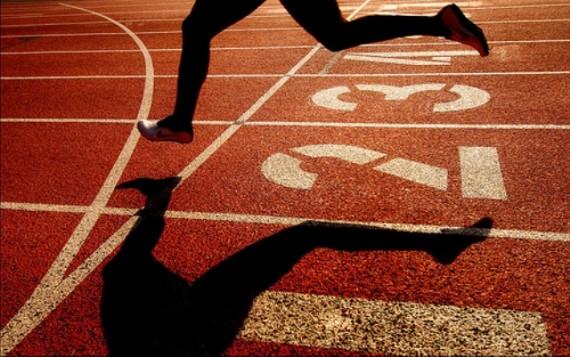 Increase Your Speed In Just 3 Easy Steps
Increase Your Speed In Just 3 Easy Steps

But just because you’re not built like Usain Bolt, doesn’t mean you should throw in the towel on your high-intensity workouts. Here’s how to increase your speed and performance when sprinting.
Fix Your Posture
Being chained to a desk all day is surely going to take its toll on your posture. Your chest gets tighter, your back weaker, and your shoulders roll forward. As a result, your sprinting becomes less efficient. To improve your posture, try taking moments throughout the day to stretch. While sitting in a chair, reach your hands above your head and roll your shoulders back. Or try standing up, take in some deep breaths, and hold them for a few seconds. This helps loosen up all the muscles attached to your ribcage and hips.
Utilize Your Arm Strength
For sprinting, your rhythm and coordination needs to work together in perfect unison. To get your arms to move in-sync with the rapid turnover of your legs, you need to practice what is called the “hip-to-lip” movement. This simple technique teaches you how to move those limbs quickly and helps to develop a skill that translates to the special strength you need for sprinting:
- Get into a split stance and keep your shoulders relaxed.
- Position one hand by your chin and the other down by your hip. Next, drive your arms down and back as fast as you can for 10 seconds (as though you’re sprinting).
- When done, rest for 20 seconds and repeat the exercise a few times to get the feel for correct form.
Unless you’re a regular sprinter, it’s best to just start slow and work your way up. The reason is that you need to let your body readapt to those explosive patterns of your muscles collapsing and expanding, and will help further develop those fast-twitch muscle fibers. Start by getting your body warmed up and doing 10-yard dashes. While staying on the balls of your feet, go all out as hard as you can. Once you get the hang of it, you can slowly increase your distance over time.






